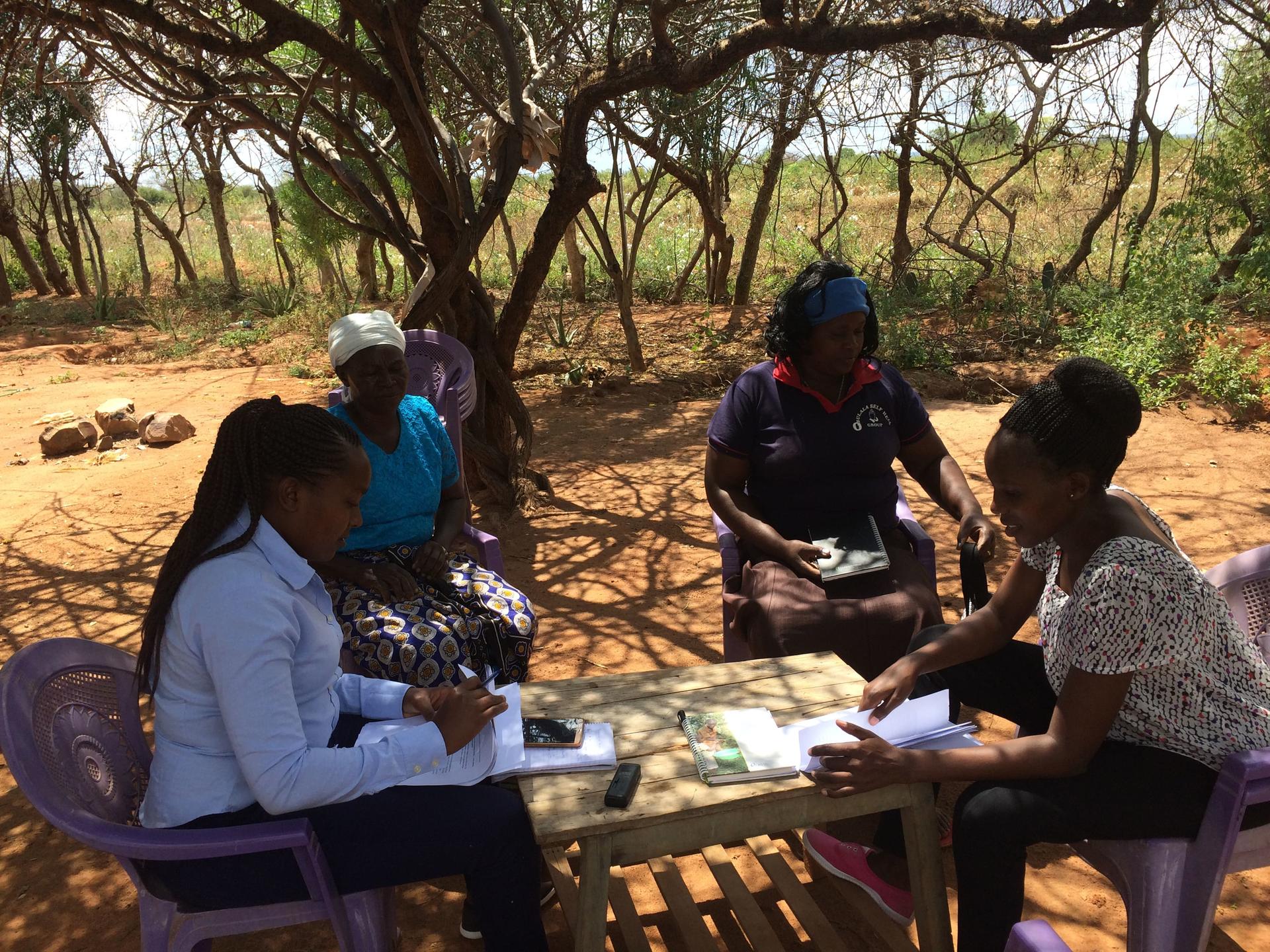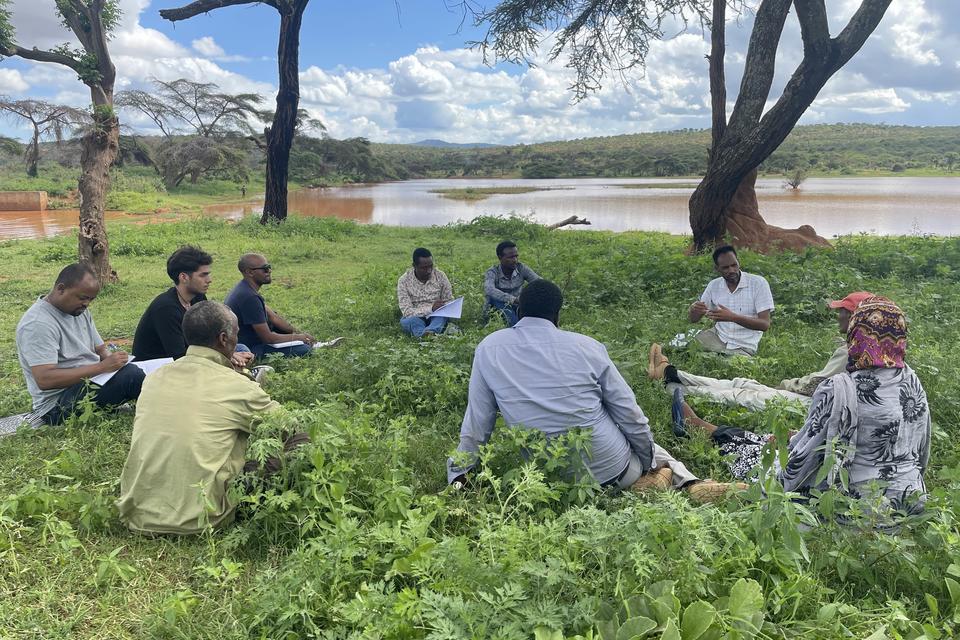Research Articles Human-centered design to bring open agricultural content to farmers

How can we overcome difficulties in accessing agricultural data? Researchers asked this question to farming-focused organizations that use the Sprout platform - an agricultural open content database developed by MeryCorps Agrifin.
Sprout is a digital platform that makes content available on a range of agricultural topics, ranging from maize and potato value chains, to livestock, financial services, and climate-smart agriculture.
"Our goal is to be the Google of Agriculture" says Ritika Sood, Sprout’s Partnerships Leader
This type of content is usually developed by local, regional and global experts, and it is often inaccessible for extension agents and organizations working directly with farmers. Mathew Ogolla (Marketing and Communication Manager for Agribora) states:
“Before Sprout, we had issues with information reliability, and difficulties transforming the content into formats that could be disseminated to farmers, meaning that our team spent a lot of time searching and adapting information to make suitable for use”.
Sprout overcomes this challenge by gathering the content and putting it on the platform in ready-to-use formats, such as text for SMSs, voice capsules, or leaflets.
MercyCorps AgriFin is a use case led by Excellence in Agronomy (EiA) - new CGIAR research initiative. EiA follows a demand-driven approach in scaling agronomic innovations across Africa, Asia and Latin America. At the core of EiA is the development of case studies (also known as use cases) together with partners to assure that agronomic innovations are science-based and respond to farmer’s needs. EiA is supporting MercyCorps in two main areas: 1) the acquisition and integration of content developed by the CGIAR centers into the platform 2) understanding user experience and user needs for the platform and its content. Sprout wanted a more systematic understanding of how FFOs and farmers interact with the platform and with the advisory content to improve the services offered. To do this, the EiA use case support team is applying human-centered design to understand the experience of organizations working with farmers in relation to the platform and its content, identifying challenges, and exploring pathways for improvement.
The Approach
Applying a set of different user research methodologies such as qualitative interviews, direct observation and card sorting exercises the human-centered design team talked to five organizations in Kenya and Nigeria, capturing diverse levels of experience and engagement with the Sprout platform.
Insights
Organizations unanimously stated that the process of accessing content is often long and tedious, requiring complex partnerships. The Sprout platform has made this easier, making content available from international research institutions such as the CGIAR and national research institutes and ministries.
“The platform has aggregated content and states the content sources which are always reputable institutions. When we see the source of the information it increases our trust in it” says Ann Wanza, Operations Manager for DigiCow.
However, as stated in the user profile (fig. 1), we found that the advisory content provided can still be improved. Although a lot of topics are already available, further customization could significantly help, allowing organizations to target farmers with content based on their needs and characteristics, such as ecosystem or gender. These findings are not only helpful for the Sprout team, who oversee the acquisition of the content, but also for content development institutions such as the CGIAR centers, since they can increase the specificity of their content, confident that this will be of use for the farmers targeted.
Design principles have been identified, stating the basis any platform providing advisory content for agriculture should follow:
-
Reliability: the platform should always state the source of the content, alongside any other relevant details (e.g., date of publication).
-
Up to date: the platform should provide alerts on new content and content updates, ensuring that organizations are aware of the latest developments.
-
Two-way communication: the platform should allow systematic collection of feedback from its users, ensuring that all relevant information is displayed, and that needs are systematically identified.
-
Ease of use: content should be in formats that are easy to adapt to the needs of the organizations, providing flexibility to add further details and translate it into local languages.
-
Specificity: content should include details that ensure its correct use, such as geographic coverage, ecosystem, and intended users.
-
Adaptability: the advisory content should be easy to link to other decision-making tools and advisories such as crop calendar and weather forecasts.
Furthermore, three main design challenge areas have been identified, which have been formulated as “how might we” statements: a problem-solving technique used in design thinking and innovation processes which allows users to frame challenges as questions.
-
How might we support users of the Sprout platform to have a seamless experience, accessing content in an efficient and effective manner?
-
How might we support organizations working with farmers access content that is closer to farmers' realities, catering for diverse needs and ecosystems?
-
How might we support Sprout in testing prototypes around content format, including different terminologies and information bundles that target specific farmer segments?
Meet the Team

Anna Muller
Scientist, Team Lead Inclusive Design and User ResearchBerta Ortiz Crespo
User Experience Design Specialist
Maryfaith Simiyu
Human-Centered Design TraineeTo address these action points, the Human Centered Design team will continue working closely with Sprout and EiA, gathering a better understanding of how farmers use the content provided by research institutions, and how it can be further improved. This work sets the foundation for design guidelines and principles to build any open-data platform for agricultural content, ensuring that the information provided will be relevant to its end users: farmers.
Figure 1: user profile, showing the characteristics of an archetype profile of an organization interacting with the Sprout platform.


